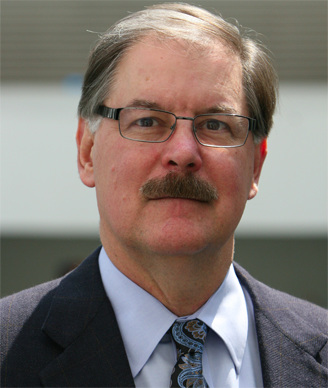Mammography Benefits More Consistent Than Previously Understood
Major studies conducted to date looking at mammography screening and mortality have estimated that the number of women needed to be screened in order to prevent one breast cancer death ranged from 111 to 2,000, an almost 20-fold difference; however, the benefits of mammography may be more consistent than previously thought, according to a re-examination of these studies presented at the SABCS.
Robert A. Smith, PhD

SAN ANTONIO-Major studies conducted to date looking at mammography screening and mortality have estimated that the number of women needed to be screened in order to prevent one breast cancer death ranged from 111 to 2,000, an almost 20-fold difference; however, the benefits of mammography may be more consistent than previously thought, according to a re-examination of these studies presented at the 2013 San Antonio Breast Cancer Symposium.
In fact, when Robert A. Smith, PhD, senior director of cancer screening at the American Cancer Society, and colleagues examined the data from these four large studies using several common denominators, the number of women needed to be screened to prevent one breast cancer death decreased to 64 to 257, a much smaller range.
To understand why all the estimates of benefit widely differed, Smith and colleagues looked at four major reviews of mammography screening: the UK Independent Review, the Nordic Cochrane Review, the US Preventive Services Task Force review, and the EUROSCREEN review. They found that each of these reviews were trying to answer the same question-what is the benefit of mammography screening on mortality-but each made estimations based on different follow-up period lengths, varied age groups, differences in whether the intervention described is actual screening or invitation to screening, and other factors.
Modern measures of the effectiveness of screening largely depend on the reduction seen in mortality (typically 20% fewer deaths), the duration of follow-up, and whether the intervention is measured by invitation to screening or exposure to screening.
“A letter doesn’t do any good,” Smith said. “You have to show up for mammography in order to get any benefit from it.”
In addition, Smith pointed out that long-term follow-up is necessary to measure the full benefit of breast cancer screening. The total number of observed deaths at 10 years may not even capture half of the breast-cancer specific deaths that will occur, he said.
In order to standardize the results of these trials, the researchers applied the data from each to the scenario used in the UK Independent Breast Cancer Screening review. This review looked at the effects of screening for 20 years, from age 50 to 69, on breast cancer mortality in ages 55 to 79 years and found that for every 180 women screened one breast cancer death could be prevented.
Originally, the Nordic Cochrane Review used the criteria of a 15% reduction in breast cancer mortality, an overlapping 10-year screening and follow-up period, ages 40 to 74 years and looked at women invited to screening. Data indicated that 2,000 women screened were needed to prevent one breast cancer death. Once all of the parameters of the UK review were applied to the Nordic Cochrane estimate, the absolute benefit decreased to 257 women needed to screen to prevent one breast cancer death.
Next, the researchers applied the criteria to the USPSTF review, which originally estimated 1,339 women aged 50 to 59 years and 377 women aged 60 to 69 years would need to be invited to screening to prevent one breast cancer death. When Smith and colleagues adjusted the data to look at women aged 50 to 69 years and a follow-up period of 20 years, the number needed to screen was reduced to 193.
Finally, the common denominators were applied to the EUROSCREEN review, which originally used ages 50 to 70 years and 30 years of follow-up to estimate that 90 women needed to be screened to prevent one breast cancer death. When adjusted, the number needed to be screened was 96.
Taken together, the gap between the four studies went from a 20-fold difference to about a 2.5-fold difference between 96 women needed in the EUROSCREEN trial to 257 needed in the Cochrane review.
“The debate about the value of mammography screening is not likely to fade away, and there are real, reasonable differences of opinion about various aspects of screening,” Smith said in a press release. “However, we hope these findings reassure clinicians and the public that that there is little question about the effectiveness of mammography screening, which should continue to play a very important role in our efforts to prevent deaths from breast cancer.”